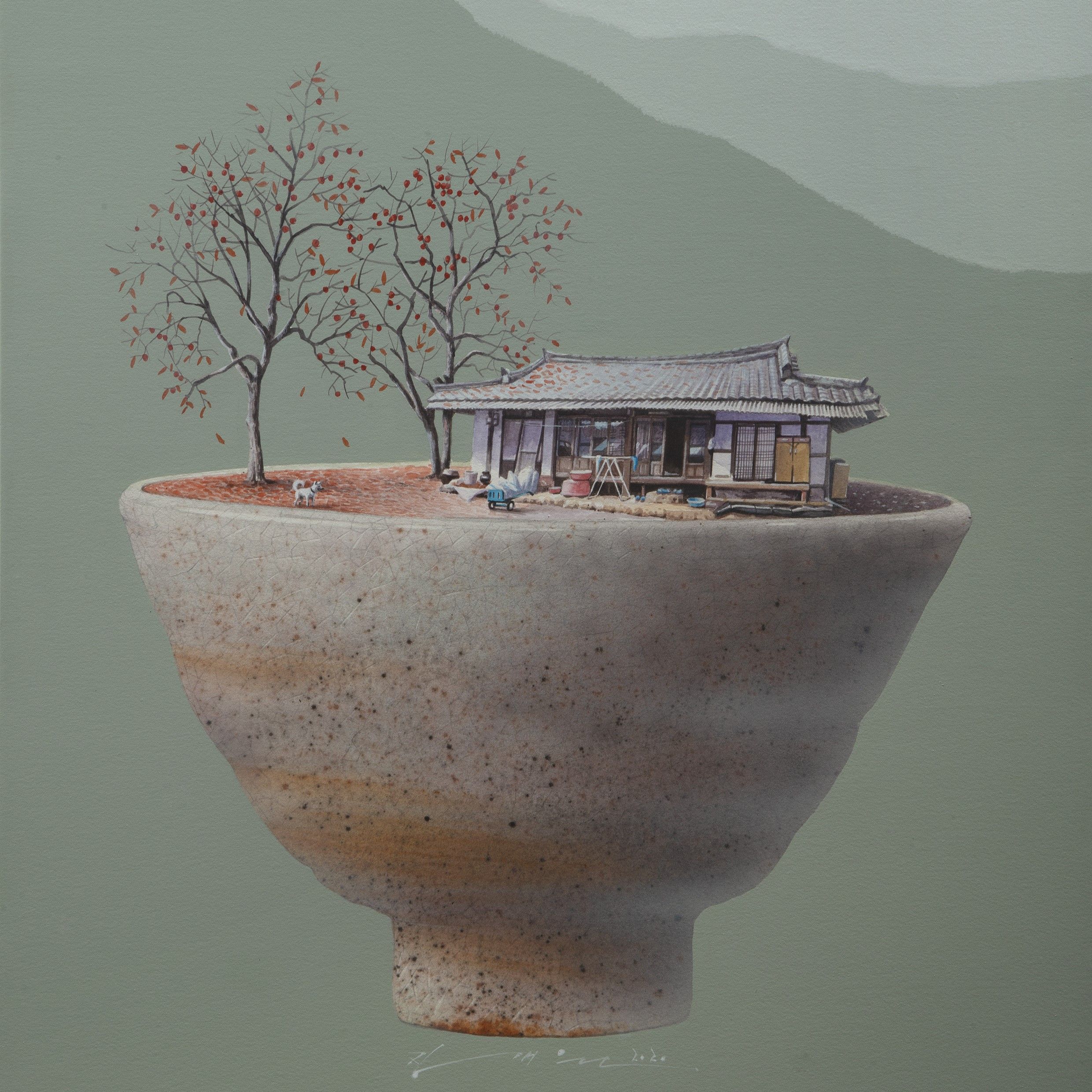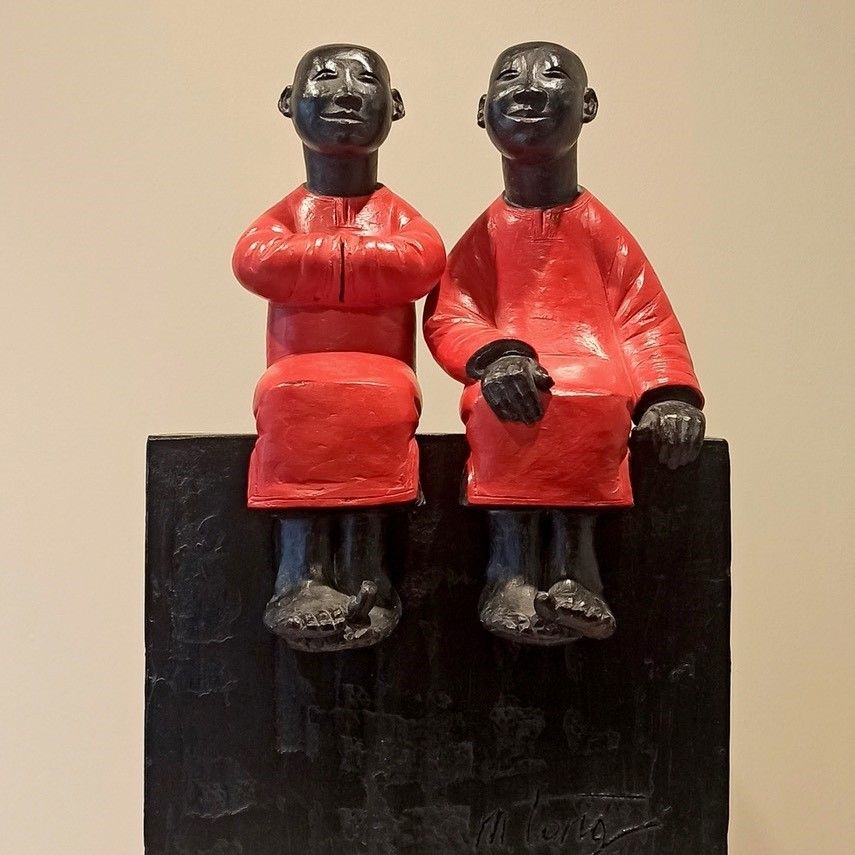FamArte
| Specialism | Asian Art |
|---|---|
| City | Meise (Brussels) |
| Address | Vilvoordsesteenweg 99 | 1860 |
| Country | Belgium |
| art@famarte.be | |
| Website | www.famarte.com |
| Phone Number | +32495289100 |
Indian and South East Asian works of art: comtemporary, antiques and decorative works.
1 & 2:
Couple of calling bells Dong Son
Cambodia
Dong Son period, circa 300 BC-300 AD
Cast in bronze with green patina and old earth incrustation
H9 x W8 cm (each bell)
These bells, made according to the lost wax technique and found in pairs under the earth, were used to decorate water buffalo and to announce their arrival.
They are decorated with stylized buffalo heads with horns, and equipped with cables and spirals, typical of the Dong Son culture.
The buffalo head is a common symbol of abundance and virility.
The original iron clapper, which mimics the typical sound of a frog, is still present.
Centuries of earth incrustation and oxidation have fused inside the bubble.
The Dong Son culture was named after a village in northern Vietnam on the banks of the Ma River where a large number of bronze objects were found in 1924.
The Dong Son were advanced farmers who grew rice and raised buffalo.
The culture of the bronze age originated in Vietnam and developed in the other countries of Southeast Asia.
The skill of the Don Son artists is evident in these small but complex shapes, made in different parts.
3:
Cho Fa, Thailand, 19th Century, teak, H260cmx70x52cm and H250x67x52cm
A Cho Fa is an elongated teak architectural part of the roof spire of the Buddhist temple in Thailand. These usually have the shape of a bird, referring to Garuda, the vehicle of Vishnu when he descends to Earth. These Cho Fa take the form of a Makara, with striking eyes, horns, an open mouth with visible teeth, a tongue and a beard. A Makara is a kind of benign water monster that is supposed to protect the temple. These uniquely graceful Cho fa are covered with colored lacquer and gilding.
The teak wood has a beautiful age patina. The Cho Fa are mounted on a metal display.
4:
Shiva Mukhalinga (with the head of Shiva)
Cambodia
Pre-Angkor Period, circa 7-8th Century
Sandstone with aging patina
H40cm
The Shivalinga is the phallus symbol of the god Shiva, it is the immaterial form of this deity. During the period of the construction of the Angkor temple, a lot of political and spiritual importance was attached to the linga.
Linga with a face (Mukha-linga) were especially popular during the Pre-Angkor period. In the subsequent Angkor period, preference was given to the more abstract form without a face.
The spherical and natural shape is characteristic of the linga. The three-part division into a square base, an octagonal center section and a cylindrical top can be easily recognized.
Not only the face but also the chest with the broad shoulders are clearly depicted. The remarkably long ears are embellished with earrings. The hat is crowned with a quiver, which rises like an "axis mundi" in the linga. (For a similar example: Hellen I. Jessup & T. Zéphir, Angkor et dix siècles d’art Khmer, 1997, Editions de la Réunion des musées nationaux, pages 176-177.)
1 & 2:
Couple of calling bells Dong Son
Cambodia
Dong Son period, circa 300 BC-300 AD
Cast in bronze with green patina and old earth incrustation
H9 x W8 cm (each bell)
These bells, made according to the lost wax technique and found in pairs under the earth, were used to decorate water buffalo and to announce their arrival.
They are decorated with stylized buffalo heads with horns, and equipped with cables and spirals, typical of the Dong Son culture.
The buffalo head is a common symbol of abundance and virility.
The original iron clapper, which mimics the typical sound of a frog, is still present.
Centuries of earth incrustation and oxidation have fused inside the bubble.
The Dong Son culture was named after a village in northern Vietnam on the banks of the Ma River where a large number of bronze objects were found in 1924.
The Dong Son were advanced farmers who grew rice and raised buffalo.
The culture of the bronze age originated in Vietnam and developed in the other countries of Southeast Asia.
The skill of the Don Son artists is evident in these small but complex shapes, made in different parts.
3:
Cho Fa, Thailand, 19th Century, teak, H260cmx70x52cm and H250x67x52cm
A Cho Fa is an elongated teak architectural part of the roof spire of the Buddhist temple in Thailand. These usually have the shape of a bird, referring to Garuda, the vehicle of Vishnu when he descends to Earth. These Cho Fa take the form of a Makara, with striking eyes, horns, an open mouth with visible teeth, a tongue and a beard. A Makara is a kind of benign water monster that is supposed to protect the temple. These uniquely graceful Cho fa are covered with colored lacquer and gilding.
The teak wood has a beautiful age patina. The Cho Fa are mounted on a metal display.
4:
Shiva Mukhalinga (with the head of Shiva)
Cambodia
Pre-Angkor Period, circa 7-8th Century
Sandstone with aging patina
H40cm
The Shivalinga is the phallus symbol of the god Shiva, it is the immaterial form of this deity. During the period of the construction of the Angkor temple, a lot of political and spiritual importance was attached to the linga.
Linga with a face (Mukha-linga) were especially popular during the Pre-Angkor period. In the subsequent Angkor period, preference was given to the more abstract form without a face.
The spherical and natural shape is characteristic of the linga. The three-part division into a square base, an octagonal center section and a cylindrical top can be easily recognized.
Not only the face but also the chest with the broad shoulders are clearly depicted. The remarkably long ears are embellished with earrings. The hat is crowned with a quiver, which rises like an "axis mundi" in the linga. (For a similar example: Hellen I. Jessup & T. Zéphir, Angkor et dix siècles d’art Khmer, 1997, Editions de la Réunion des musées nationaux, pages 176-177.)


